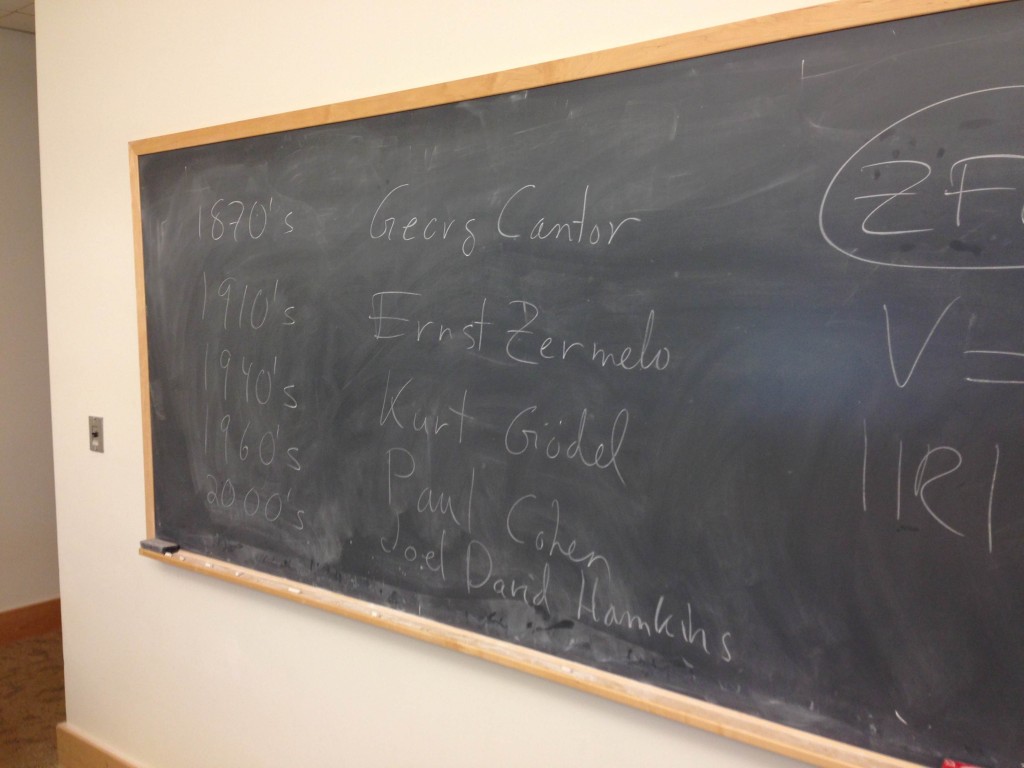[bibtex key=”DoraisHamkins:When-does-every-definable-nonempty-set-have-a-definable-element”]
Abstract. The assertion that every definable set has a definable element is equivalent over ZF to the principle
, and indeed, we prove, so is the assertion merely that every 𝑉 = H O D -definable set has an ordinal-definable element. Meanwhile, every model of ZFC has a forcing extension satisfying Π 2 in which every 𝑉 ≠ H O D -definable set has an ordinal-definable element. Similar results hold for Σ 2 and H O D ( ℝ ) and other natural instances of H O D ( O r d 𝜔 ) . H O D ( 𝑋 )
It is not difficult to see that the models of ZF set theory in which every definable nonempty set has a definable element are precisely the models of
In this brief article, we shall identify the limit of this elementary observation in terms of the complexity of the definitions. Specifically, we shall prove that
Theorem. The following are equivalent in any model
𝑀 Z F C + V = H O D 𝑀 - Every definable nonempty set in
𝑀 - Every definable nonempty set in
𝑀 - Every ordinal-definable nonempty set in
𝑀 - Every
Π 2 𝑀
Theorem. Every model of ZFC has a forcing extension satisfying
The proof of this latter theorem is reminiscent of several proofs of the maximality principle (see A simple maximality principle), where one undertakes a forcing iteration attempting at each stage to force and then preserve a given
This inquiry grew out of a series of questions and answers posted on MathOverflow and the exchange of the authors there.


